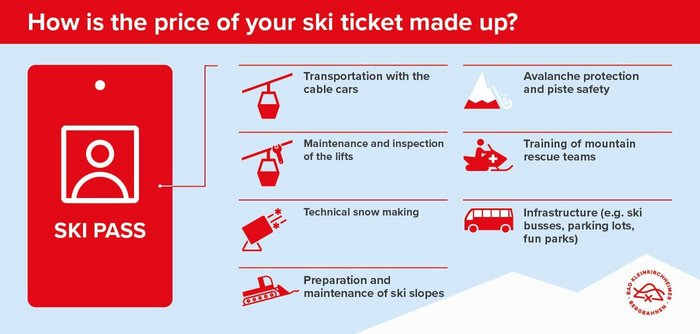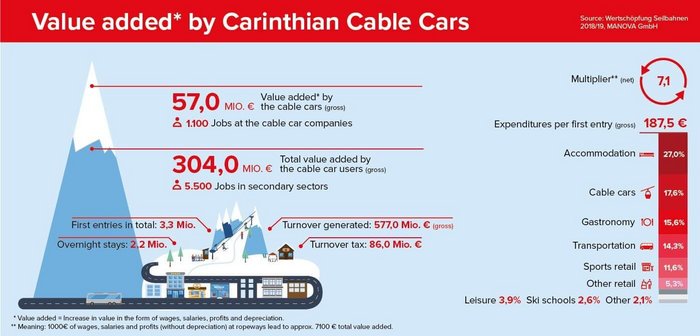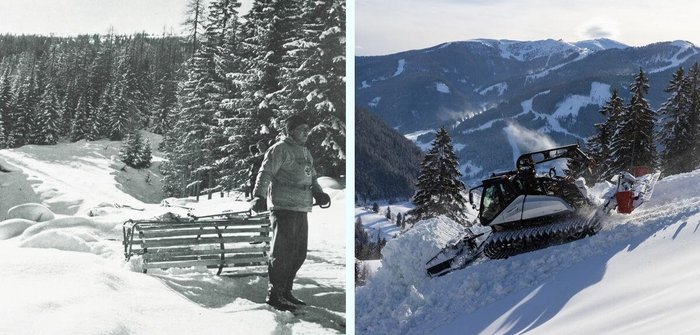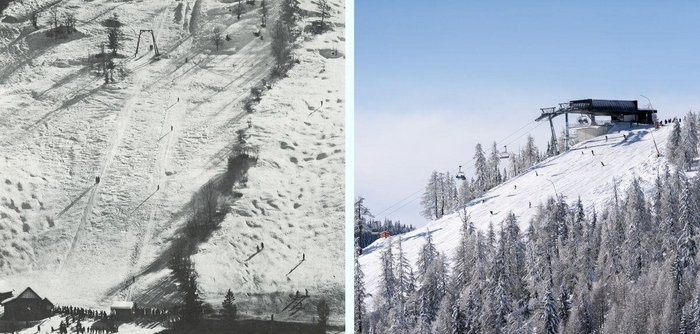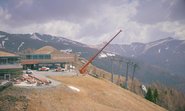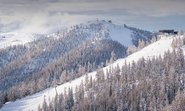Freshly groomed slopes in winter and green Alpine meadows in summer welcome you to have fun in the high mountains. It only takes a few minutes to reach the summit by cable car and enjoy magnificent views of the Carinthian Nockberge. But what other purposes do cable cars actually serve? What role do they play in the regional economy? And exactly how is the price of your ski ticket calculated?
We’ve summarised the most important information concerning the operations at the Bad Kleinkirchheimer Bergbahnen. So climb aboard and join us on an exciting journey through the Austrian cable car industry.
Austria and its cable cars.
When it comes to choosing a ski resort, Austria has the edge. With around 3000 cable cars and lifts, Austria's cable car companies are amongst the world's leaders in ski tourism. State-of-the-art infrastructure, top-quality slopes and comfortable facilities ensure that approximate two thirds of winter holidaymakers come to Austria just for its great skiing. All together, people ski for a collective 47 million days per year. This means that worldwide every 6th day of skiing is spent on Austria’s slopes!
An important driver of economic growth and a stable employer.
Cable cars are so much more than mere shuttles to the ski slopes. First and foremost, they are regional drivers of economic growth and stable employers. With a gross turnover of 11.2 billion euros, cable car companies contribute significantly to the economic prosperity of the country. Because many cable car companies are increasingly open in summer, they also create stable year-round jobs in the holiday regions.
How are ski ticket prices determined?
It is impossible to imagine Austria's Alpine regions without cable cars. Carinthia's cable car companies alone welcome around 3.3 million guests in winter. When you arrive at the ski resort, your first stop is usually the ticket office. But how is the price of your ski ticket actually broken down?
When you buy a ticket, you are not only paying for transport with the cable car, you are also supporting a number of important services and amenities. First and foremost, the revenue is used to ensure the operation, safety, and maintenance of the cable cars. Keep in mind that the ski bus service and the maintenance of the car parks are also financed by your ticket. Another percentage goes to avalanche prevention and slope grooming.
In addition, over the past 10 years, more than six billion euros have been invested throughout Austria in machinery and equipment directly related to cable car operations. Climate change and winters with less precipitation pose major challenges for many ski resorts. In order to boost the region's tourism capacity throughout the winter, most cable car companies now rely on technical snowmaking for their slopes. Around 90% of the energy used is fed from renewable energy sources in order to manage Alpine nature conservation as responsibly and sustainably as possible. In the case of the Bad Kleinkirchheimer Bergbahnen, power comes from hydropower, wind, biomass, biogas and solar energy sources.
In addition to the ongoing operation of the cable cars, we also take great care to ensure your safety. In case something does happen, the Austrian cable car companies invest around 11 million euros a year in the training and further education of ski patrol and rescue teams.
By the way: In an international comparison, Austria's ski tickets are excellent value for money. Our cable car companies also score highly with a 90% recommendation rate. The large number of ski resorts and the wide variety of offers make Austria an attractive destination for ski holidaymakers.
The Bad Kleinkirchheimer Bergbahnen.
Here at Bad Kleinkirchheimer Bergbahnen we also make a significant contribution to the Austrian cable car industry and to our region with our innovative approach and variety of services.
What began in 1956 with a small surface lift has since developed into Carinthia's largest single cable car company. More than half a million guests a year benefit from our infrastructure, in which we have invested around 24.5 million euros in the past five years alone.
Our group pays close attention to responsible business practices. A portion of our investments goes, for example, into sustainable measures for water storage and snow production. Since the construction of the first snowmaking system in 1983, our ski resort has accumulated over 800 snow guns, 4 water reservoirs, 10 snow groomers as well as several skidoos, quads and allterrain vehicles.
Today, Bad Kleinkirchheim is Carinthia’s second largest ski resort with 103 kilometers of slopes and 24 lifts and cable cars. It is also one of the largest employers in the region. Around 160 employees ensure the smooth operation of our cable cars, the Thermal Römerbad and our adventure offers on the mountain, both up front and behind the scenes.
It's exciting to see what's behind your 10-minute journey up the mountain, isn’t it?

